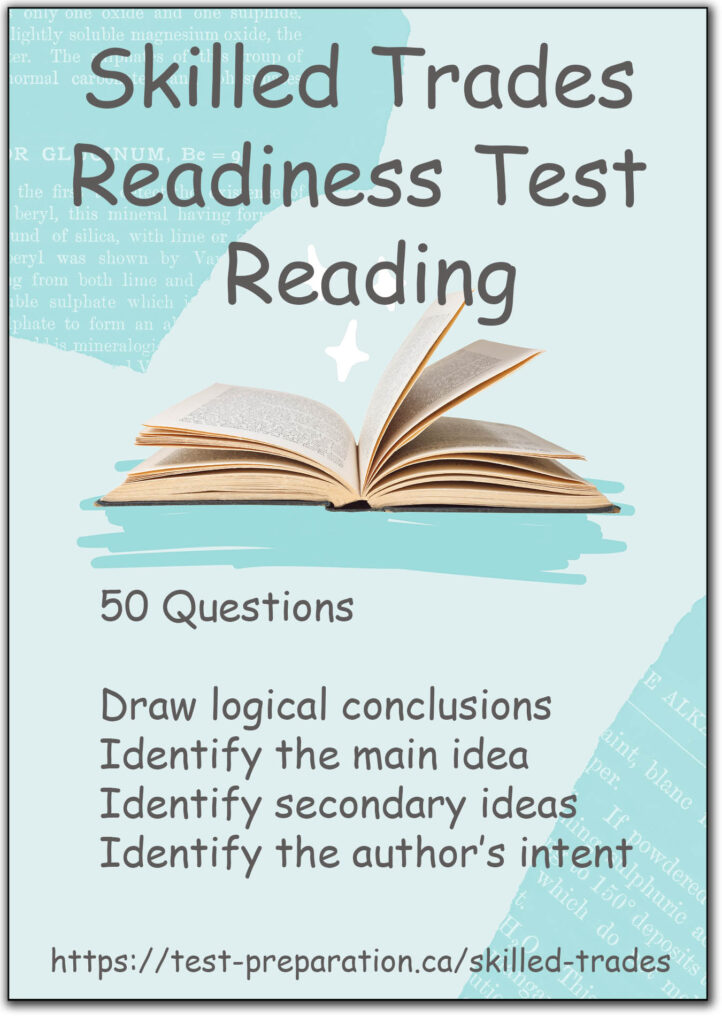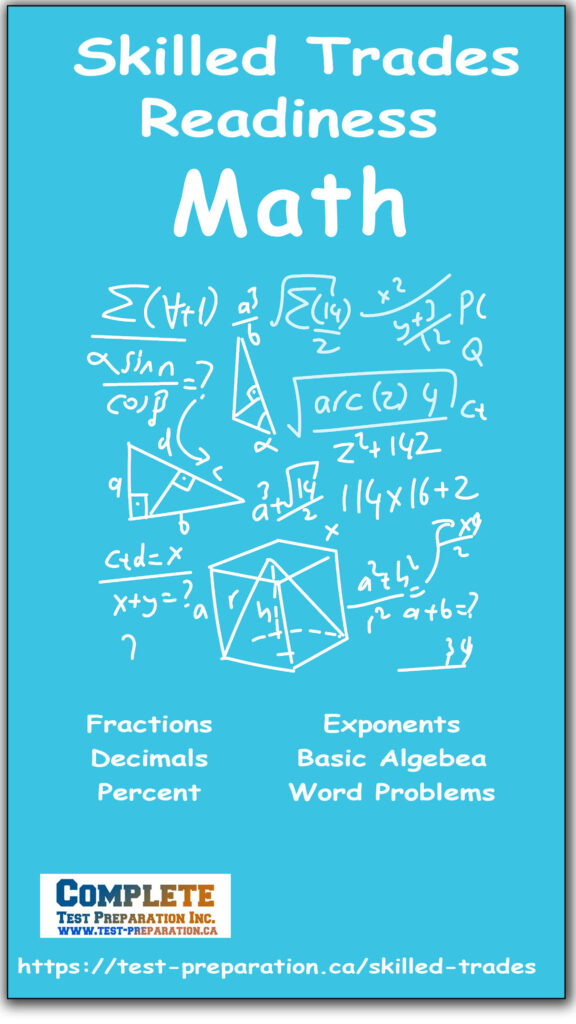Ontario Skilled Trades Readiness Test Overview – Practice Questions & Prep
The Ontario Skilled Trades Readiness Test is a key assessment designed to evaluate your foundational skills and aptitudes for success in Ontario’s rapidly expanding skilled trades.
Areas covered are:
- math
- reading comprehension
- mechanical reasoning
- problem-solving

Overview of Skilled Trades Growth in Ontario
Recent labor market analyses and government forecasts indicate that skilled trades occupations in Ontario are expected to experience steady growth over the next decade. This growth is driven by factors such as:
- Major infrastructure projects and investments in transportation, energy, and housing.
- Retirement of aging workers, leading to increased demand for new entrants.
- Technological advancements requiring specialized skills and certifications.
- Government initiatives to promote careers in the skilled trades.
Get ready for an in-demand and high paying career with the Ontario apprenticeship readiness test
The Skilled Trades Readiness Test is your gateway to an apprenticeship and a high-demand career!
Don’t leave your future to chance — prepare with confidence!
Estimated Growth Rates for Selected Skilled Trades
| Occupation | Estimated Growth Rate (%) | Key Drivers |
| Electricians | 8-12% | Renewable energy, construction boom, infrastructure upgrades |
| Plumbers | 7-10% | Residential and commercial construction, water systems upgrades |
| Carpenters | 6-9% | Housing demand, renovations, commercial projects |
| Welders | 6-8% | Manufacturing, transportation, construction |
| Automotive Service Technicians | 5-7% | Vehicle technology evolution, consumer demand |
These estimates reflect anticipated annual average growth rates over the next decade. Occupations related to new technologies, such as renewable energy or advanced manufacturing, may see even higher demand.
Factors Influencing Skilled Trades Growth
- Demographics: The retirement of experienced tradespeople is creating significant opportunities for new workers to enter the field.
- Economic Development: Ontario’s focus on infrastructure, housing, and green energy projects is fueling demand for skilled trades.
- Education and Training: Expanded apprenticeship programs and government incentives are helping to attract more people to the trades.
- Technological Change: Adoption of new technologies is requiring tradespeople to upgrade their skills and credentials.
Ontario Skilled Trades Salaries
| Trade | Average Annual Salary (CAD) |
| Electrician | $60,000 – $85,000 |
| Plumber | $55,000 – $80,000 |
| Carpenter | $50,000 – $75,000 |
| Welder | $48,000 – $75,000 |
| HVAC Technician | $55,000 – $85,000 |
| Automotive Service Technician | $45,000 – $70,000 |
| Millwright | $60,000 – $90,000 |
| Heavy Equipment Operator | $50,000 – $80,000 |
Factors Affecting Salaries
- Experience: Journeypersons and those with several years of experience typically earn at the higher end of the salary range.
- Location: Salaries may be higher in urban centers like Toronto compared to rural areas.
- Union Membership: Unionized trades often receive better pay and benefits.
- Industry Demand: Trades with higher demand, such as electricians and millwrights, may command higher salaries.
Reading Comprehension
Reading Comprehension usually covers:
- Finding specific information in a passage – the information may be stated directly or implied
- Meaning of words from the context
- Drawing conclusions from the information in the passage
Why Reading Comprehension is important for the Skilled Trades Test
- Manuals and Documentation You will have to follow complex instructions, operate machinery, and work with equipment. Good reading comprehension skills ensure that you can read and understand instruction manuals, safety guidelines, and technical documentation.
- Safety You will work with heavy machinery, electrical systems, and other potentially hazardous materials. In the trades work environment, which is often hazardous, so misunderstanding safety guidelines or operating procedures, because of poor reading comprehension can cause accidents and injuries.
Recommended Reading Comprehension Practice
Reading Comprehension The Complete Guide
Reading Comprehension Practice I
Reading Comprehension Practice II
3. Regulations and Codes Tradespeople must follow industry regulations, building codes, and standards. These are technical and legal documents that require strong reading comprehension skills.
Basic Math
The Basic Math Section includes:
- Estimation
- Order of Operation
- Exponents
- Fractions, Decimals and Percent
Why Basic Math is Important for the Skilled Trades Entrance Test and Industry Training
- Measuring and Calculating You will often need to make precise measurements and calculations required for materials, dimensions and quantities.
- Reading Blueprints You will frequently read and interpret and must thoroughly understand, dimensions, angles, and other mathematical information .
Recommended Basic Math Practice
Exponents
Basic Math
Basic Math 2
Word Problems
Percent
Fractions, Percent and Decimals
Order of Operation
3. Safety Basic math skills are important for calculating load capacities, understanding weight distribution, and determine safe working distances.
4. Cost Estimation You will use basic math skills to calculate material costs, labor expenses, and project budgets.
Mechanical Reasoning Practice Questions for Trades
The Mechanical Aptitude section includes
- Reading gauges
- Reading maps
- Visualizing floor plans and houses
- Following direction on given maps
- Gears, levers and mechanical devices
Recommended Mechanical Reasoning Practice
Mechanical Comprehension I
Mechanical Comprehension II
Spatial Ability
The Skilled Trades Readiness Test is your gateway to an apprenticeship and a high-demand career!
Don’t leave your future to chance — prepare with confidence!
Date Published: Wednesday, September 17th, 2025
Date Modified: Monday, October 6th, 2025



